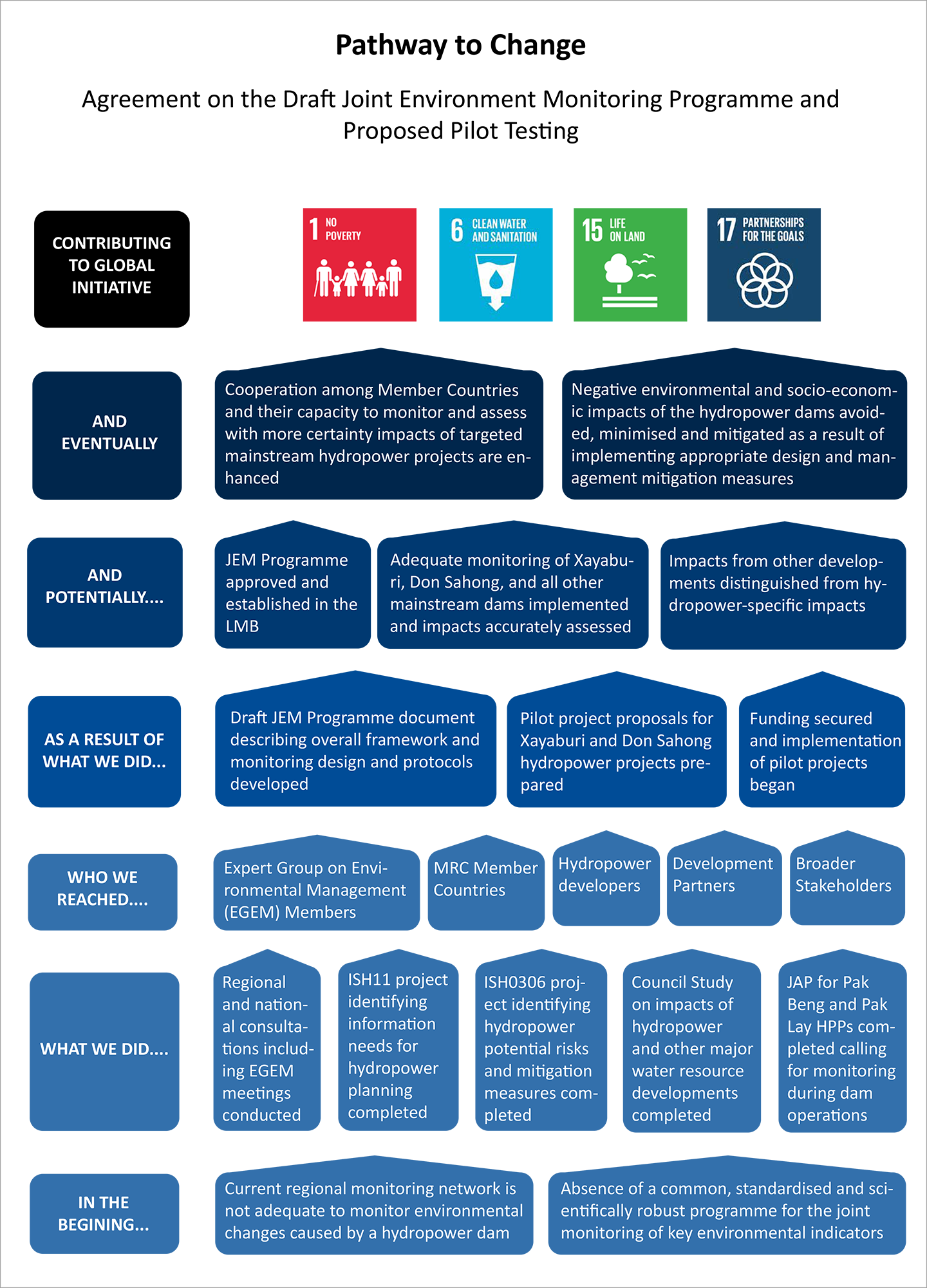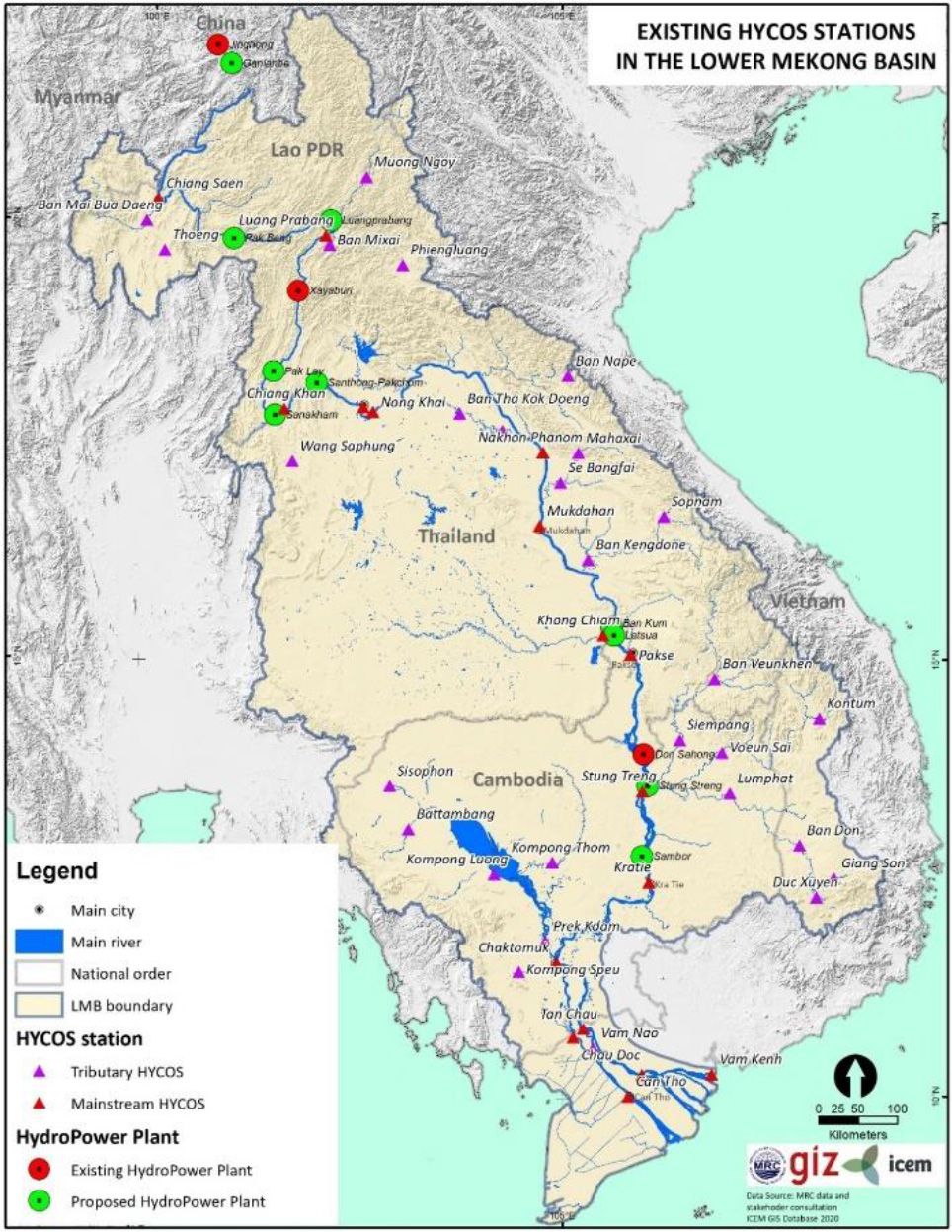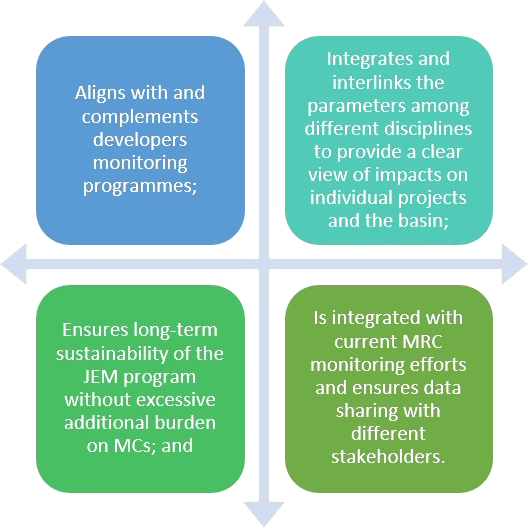OUTCOME 3 - SUCCESS STORY Agreement on the Draft Joint Environment Monitoring Programme and Proposed Pilot Testing
Indicators:
- Number of TB national and provincial projects applying MRC guidelines
- Evidence of national and basin benefits in using MRC guidelines and standards


Highlights
Three years after its first presentation to the MRC JC in 2016, the Joint Environment Monitoring Programme (JEM) for Mekong Mainstream Hydropower Projects reached a turning point in 2019 when the MCs agreed on a final draft JEM Programme document during the regional meeting of the Expert Group on Environmental Management in May 2019.
The agreement also covered the two pilot project proposals for Don Sahong and Xayaburi hydropower projects to test the monitoring approaches described in the Programme Document for hydrology and hydraulics, sediment and geomorphology, water quality, aquatic ecology, and fish and fisheries.
With the JC taking note of its progress during the JC Meeting in September 2019 and with the GIZ technical and financial assistance funding also secured, preparation for implementation of the pilot projects was subsequently initiated with a kick-off of the inception phase in November 2019.
This proposed regional monitoring programme aims to address the need to determine impacts, including transboundary impacts, of mainstream hydropower projects and to distinguish the project-specific induced changes to the basin from the cumulative basin-wide impacts of all other developments.
Ascertaining impacts attributable to a specific project is crucial in identifying and implementing (through joint cooperation) appropriate adaptive management approaches for that project in order to avoid, minimise, and mitigate negative impacts including both localized and transboundary impacts.
JEM Programme
The JEM Programme is designed consistent with the following requirements

Requirement of JEM Programme
Below are the snapshot summaries of the pilot project designs. Xayaburi Hydropower Dam Xayaburi Hydropower Project (XBR) is located between Luang Prabang in its upstream reach and the potential Pak Lay project dam site downstream. Xayaburi is a run-of-river scheme designed to provide hydropower generation capability comprising seven turbine‐generator units with a total of 1225 MW for export to Thailand, and one unit of 60 MW capacity for use in Lao PDR.
The Xayaburi pilot design proposes to trial the draft JEM Programme for all five environmental monitoring disciplines. In order to do so, the Xayaburi pilot design proposes to add several new monitoring stations or locations and a few new monitoring parameters. See more detail in the AR I.
New monitoring parameters (on top of routine parameters that will be extended to the new sites) include bed load movement and photographic monitoring of riverbed morphology for Sediment Monitoring; Chlorophyll and Turbidity for Water Quality Monitoring; Phytoplankton for Aquatic Ecology Monitoring; and Larvae Drift and Juvenile monitoring in Lao PDR for Fisheries Monitoring. Don Sahong Hydropower Dam Don Sahong Hydropower Plant (DSH) is a run-of-river scheme located in Lao PDR in the middle reach of the Mekong River in the southern area of Khong District, Champasak Province, 150 km downstream of the provincial capital, Pakse, about 2 km above the Lao-Cambodian border. This area is generally known as Si Phan Don (Four Thousand Islands).
The power plant is proposed to have a nominal installed capacity of 260 MW, developed by discharging the design flow of 1600 m3/s operating at the rated head of 17.8 m. Power output will vary with the seasonal flow variation.
The Don Sahong pilot design proposes testing the draft JEM Programme for all five environmental monitoring disciplines mentioned earlier. In order to do so, the DSH pilot design proposes to addseveral new monitoring stations or locations and a few new monitoring parameters.
New parameters include bed load movement and photographic monitoring of riverbed morphology (sediment); Chlorophyll and Turbidity (Water Quality); Phytoplankton (Aquatic Ecology); Larvae Drift and Juvenile monitoring in Lao PDR and Cambodia (Fish); and fish passage monitoring (Fish). See more detail in the AR I.